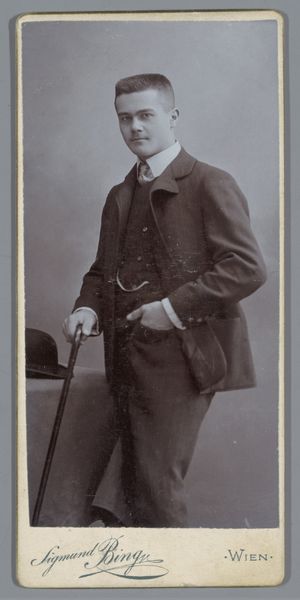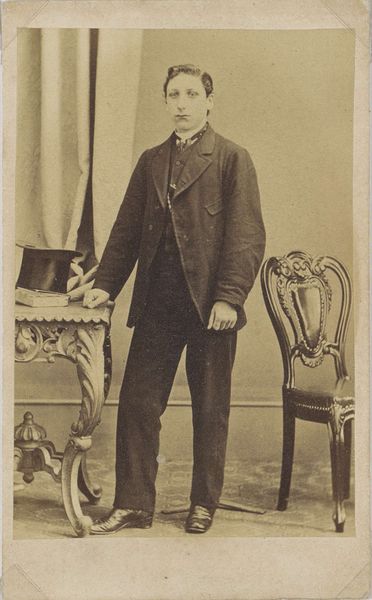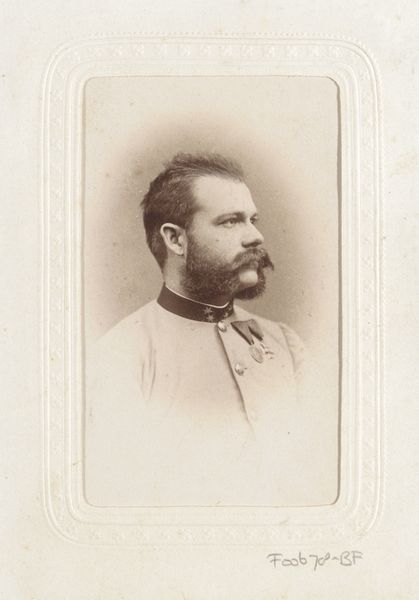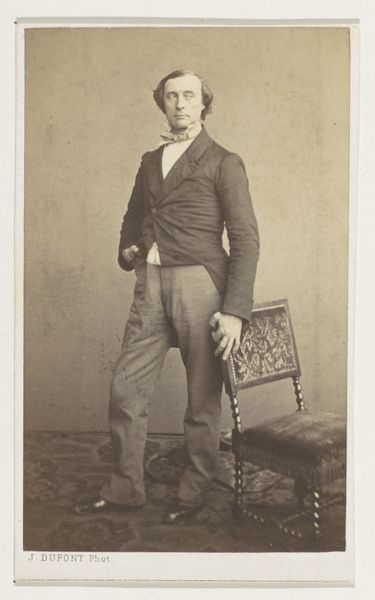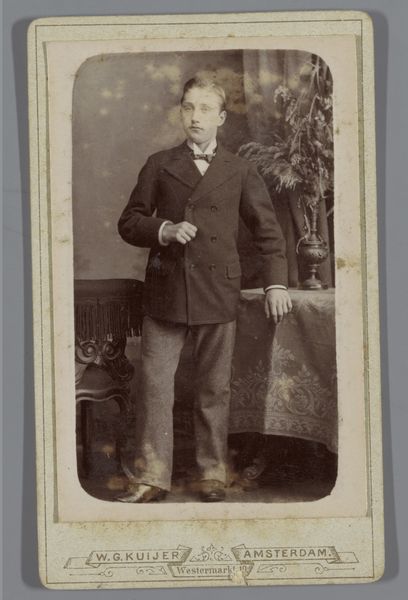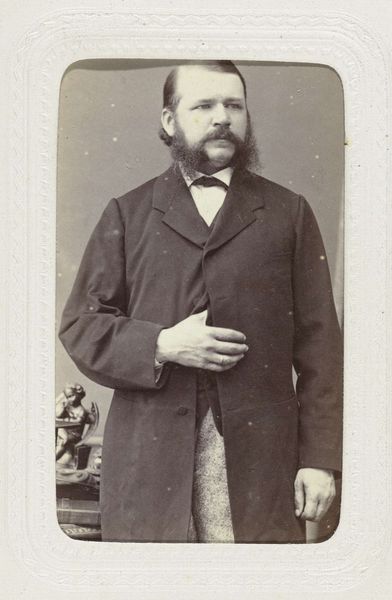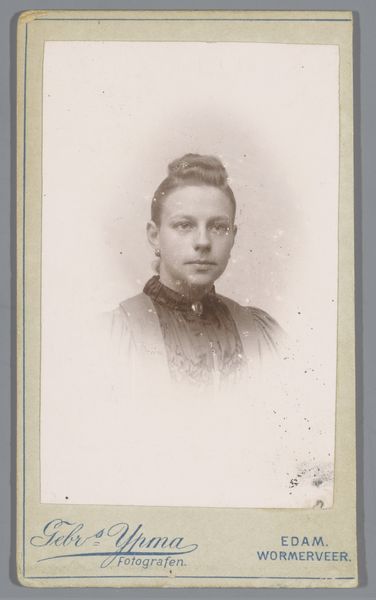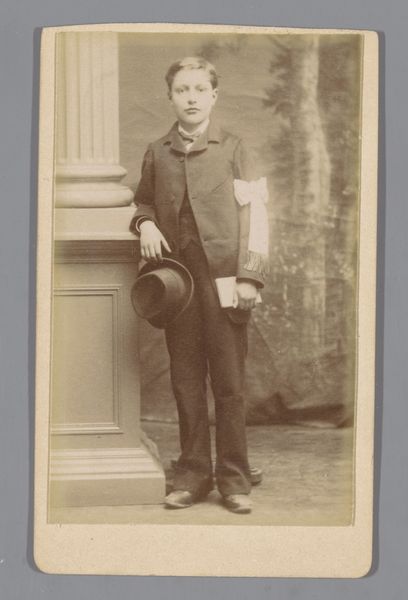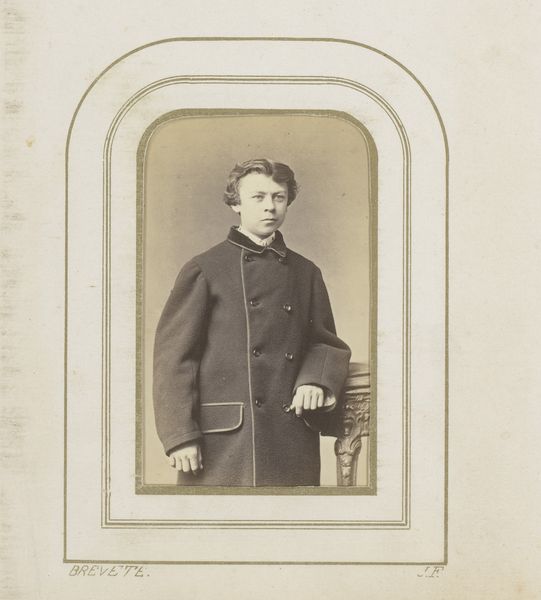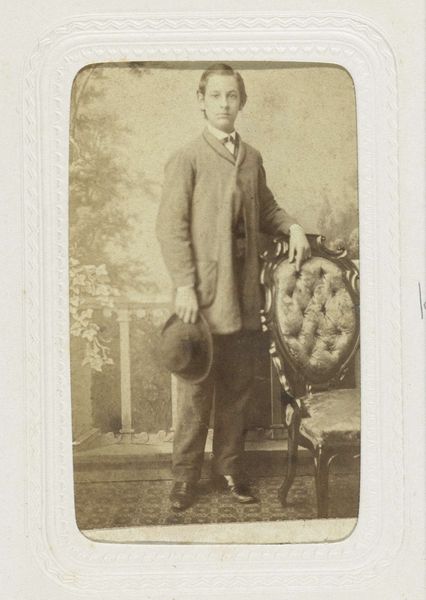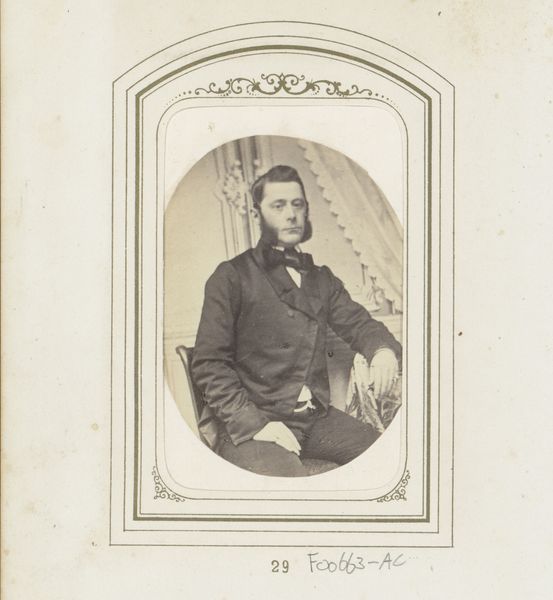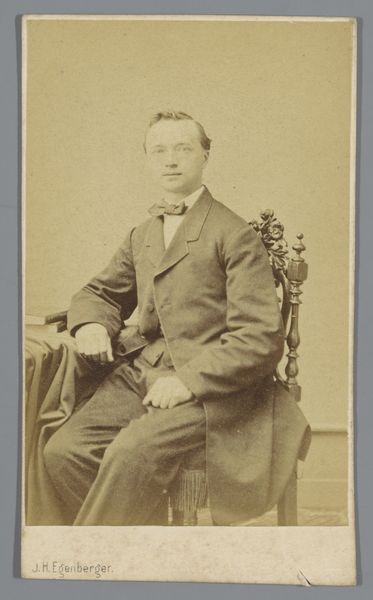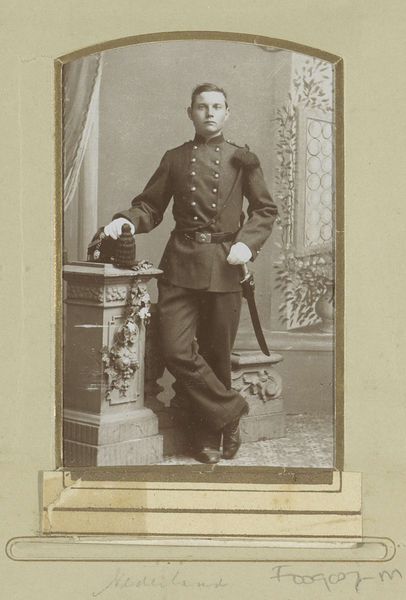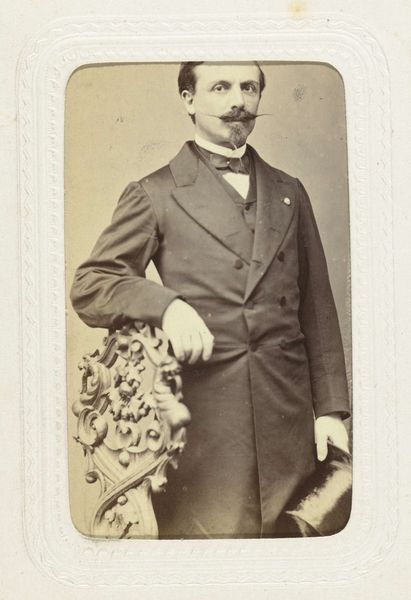
photography, gelatin-silver-print
#
portrait
#
archive photography
#
photography
#
historical photography
#
gelatin-silver-print
Dimensions: height 80 mm, width 54 mm, height 296 mm, width 225 mm
Copyright: Rijks Museum: Open Domain
Editor: This photograph, titled "Studioportret van een man met snor en baard" was taken by Abdullah Frères sometime between 1863 and 1866. It's a gelatin silver print, and the sitter’s pose seems very deliberate. I’m curious, how does the social context of photography at this time shape how we view this portrait today? Curator: That's an excellent question. This was during a period where photography was becoming increasingly accessible, yet still retained a sense of formality. These studio portraits offered a new way to present oneself publicly, beyond the traditional painted portrait reserved for the elite. How do you think this democratization of image impacted social dynamics? Editor: I hadn’t thought about it that way, but it feels like having a portrait taken at that time would have been quite a statement – like declaring yourself a person of importance, or at least, aspiration. Curator: Exactly! Notice how the man is dressed – the suit, the watch chain – and the carefully cultivated facial hair. It's all about projecting an image of respectability and status. And consider the setting. Even in the seemingly simple studio, choices were made about furniture and props. The lion-headed chair, for example, isn't just a seat, it's a symbol. It's an intriguing insight into the era's values and the burgeoning middle class striving for upward mobility, wouldn't you agree? Editor: I do agree. Seeing the photograph in that light adds so much more meaning to what I initially perceived. I had only considered him as one single person but the portrait can act as a snapshot of that moment in history for upwardly mobile folks. Curator: Precisely. And it shows how deeply entwined art and social history are, revealing how individuals and societies want to be seen, then and now. Hopefully that illuminates how this photographic work existed not just as a representation, but as an important artifact that had public consequences for image construction at the time. Editor: It definitely does. I appreciate you taking the time to really pull apart the layers here and explain how a studio portrait reflects social changes. Thanks!
Comments
No comments
Be the first to comment and join the conversation on the ultimate creative platform.
